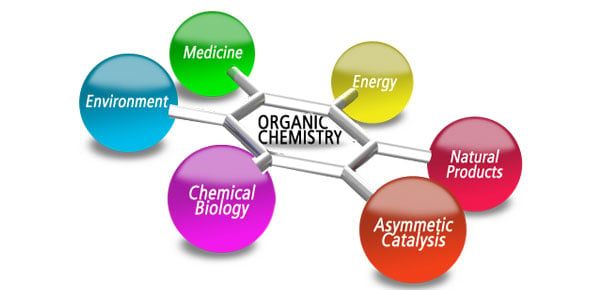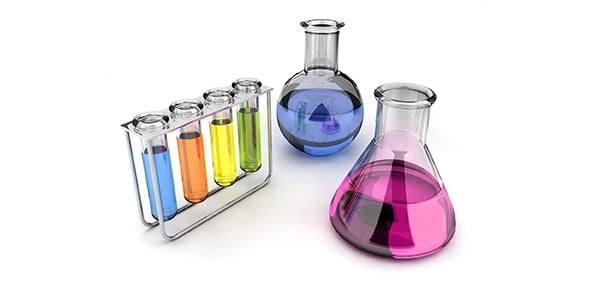Ionic And Covalent Bonding Test For Group I
-
The valence electrons are the electrons in the last shell or energy level of an atom.
-
True
-
False
-
This test is designed to measure the understanding of ionic and covalent bonding after they have been given the instructional material. Test code: 938-G35h. For group one of three for the purpose of instruction with Section II Review.

Quiz Preview
- 2.
In covalent bonding the valence electrons are ___________________________.
Explanation
In covalent bonding, the valence electrons of two atoms are shared between them. This sharing of electrons allows both atoms to achieve a stable electron configuration, resulting in a strong bond between the atoms. The shared electrons form a bond that holds the atoms together, creating a molecule.Rate this question:
- 3.
In chemical bonding atoms have the potential to either transfer or share their ______________________ electrons.
Explanation
In chemical bonding, atoms have the potential to either transfer or share their valence electrons. Valence electrons are the electrons located in the outermost energy level of an atom, and they are responsible for the atom's ability to form bonds with other atoms. By transferring or sharing these electrons, atoms can achieve a stable electron configuration and form chemical bonds with other atoms.Rate this question:
- 4.
Covalent bond:
-
Bond in which one or more electrons from one atom are detached and attached to another atom, resulting in positive and negative *ions which attract each other.
-
Bond in which one or more pairs of electrons are shared by two atoms.
-
The force by which one object attracts another.
-
Is an atom or molecule in which the total number of electrons is not equal to the total number of protons, giving it a net positive or negative electrical charge.
Correct Answer
A. Bond in which one or more pairs of electrons are shared by two atoms.Explanation
A covalent bond is a bond in which one or more pairs of electrons are shared by two atoms. In this type of bond, the electrons are not completely transferred from one atom to another, but rather they are shared between the atoms. This sharing of electrons creates a strong attraction between the two atoms, resulting in the formation of a stable molecule. Therefore, the correct answer is "bond in which one or more pairs of electrons are shared by two atoms".Rate this question:
-
- 5.
__________________________________ chemical bonds can be consisted of a pair of *valence electrons which are formed of two atoms, in comparison to the transfer of electrons in ionic bonding, but that will be covered later.
Correct Answer
Covalent
covalent
Covalent
covalentExplanation
The given answer states that the chemical bonds mentioned in the previous sentence are covalent bonds. Covalent bonds are formed when two atoms share a pair of valence electrons. This type of bonding is different from ionic bonding, where electrons are transferred between atoms. Therefore, the correct answer is covalent bonds.Rate this question:
- 6.
What is most often formed by atoms of two or more quantity that are joined?
-
Chemical Compound
-
Covalent Bonds
-
None of the above
-
Ionic Bonds
Correct Answer
A. Chemical CompoundExplanation
Atoms of two or more quantity that are joined together form a chemical compound. A chemical compound is a substance composed of two or more different elements chemically bonded together. These atoms can be held together by various types of chemical bonds, such as ionic bonds or covalent bonds. Therefore, the correct answer is Chemical Compound.Rate this question:
-
- 7.
________________________ symbols and diagrams are the main use of visualizing common compounds.
Correct Answer
Lewis
lewisExplanation
The correct answer is "Lewis, lewis." Lewis symbols and diagrams are commonly used to visualize common compounds. These symbols and diagrams, named after American chemist Gilbert N. Lewis, represent the valence electrons of atoms in a compound. By using Lewis symbols and diagrams, chemists can easily understand and predict the bonding patterns and molecular structures of compounds.Rate this question:
- 8.
Hydrogen gas forms the most complex covalent bond in the diatomic hydrogen molecule.
-
True
-
False
Correct Answer
A. FalseExplanation
The statement is false because the diatomic hydrogen molecule does not form a complex covalent bond. In fact, the covalent bond between the two hydrogen atoms in the molecule is very simple and straightforward. Each hydrogen atom contributes one electron to the bond, resulting in a sharing of two electrons between the two atoms. This type of bond is known as a single covalent bond, which is the simplest type of covalent bond. Therefore, the statement that hydrogen gas forms the most complex covalent bond in the diatomic hydrogen molecule is incorrect.Rate this question:
-
- 9.
Ionic compounds are/is (a) ______________________________. (Select correct)
-
Structurally molecular
-
Poor electrical conductor
-
Solid at room temperature
Correct Answer
A. Solid at room temperatureExplanation
Ionic compounds are solid at room temperature because they are composed of positive and negative ions held together by strong electrostatic forces of attraction. These forces prevent the ions from moving freely, resulting in a solid state.Rate this question:
-
- 10.
What can be found often of ionic bonds are those in the alkali ions such as sodium chloride, NaCl.
-
True
-
False
Correct Answer
A. FalseExplanation
What can be found often of ionic bonds are those in the alkali halides such as sodium chloride, NaCl.Rate this question:
-
- 11.
Covalent compounds are/is (a) ______________________________. (Select correct)
-
Structurally molecular
-
Good conductors of electricity
-
Solid
-
Generally high boiling points
Correct Answer(s)
A. Structurally molecular
A. Generally high boiling pointsExplanation
Covalent compounds are structurally molecular, meaning they are composed of molecules formed by the sharing of electrons between atoms. This sharing of electrons creates strong bonds within the molecule, resulting in a stable structure. Generally, covalent compounds have high boiling points because the intermolecular forces between the molecules are relatively strong. These forces must be overcome in order to break the bonds and convert the compound from a liquid to a gas state.Rate this question:
-
- 12.
This question will not be scored. Please answer honestly. Your answer WILL NOT affect your grade. How do you feel about the information in the quiz? Do you feel like you have either a (a) clear, (b) somewhat clear, (c) somewhat unclear, (d) unclear, (e) completely lost.
Quiz Review Timeline (Updated): Mar 21, 2023 +
Our quizzes are rigorously reviewed, monitored and continuously updated by our expert board to maintain accuracy, relevance, and timeliness.
-
Current Version
-
Mar 21, 2023Quiz Edited by
ProProfs Editorial Team -
Nov 09, 2010Quiz Created by
Chancelorharbin
Chemistry 103: MCQ Exam Quiz!
Chemistry 103: MCQ Exam Quiz! challenges learners with questions on chemical bonding, electron configurations, and molecular interactions. It assesses understanding of...
Questions:
15 |
Attempts:
453 |
Last updated:
May 08, 2025
|
Bonding Quiz Of Chemical Element
Explore the intricacies of chemical bonding and molecular structure in this engaging quiz. Test your knowledge on electron configurations, carbon chain forms, fat saturation,...
Questions:
47 |
Attempts:
295 |
Last updated:
Mar 21, 2023
|
BIO1332 BIOCHEMISTRY - LECTURE THREE - CHEMICAL BONDING
This quiz titled 'BIO1332 Biochemistry - Lecture Three - Chemical Bonding' assesses understanding of electron types, reasons behind the non-reactivity of noble gases, ionic and...
Questions:
6 |
Attempts:
110 |
Last updated:
Mar 22, 2023
|
Take This Easiest Chemical Bonding Trivia Questions!
Take This Easiest Chemical Bonding Trivia Questions if you are looking for a chance to test out just how much you understand about the different types of chemical bonds that exist...
Questions:
98 |
Attempts:
501 |
Last updated:
Aug 29, 2024
|
Chemical Bonds
Explore the fundamentals of chemical bonding in this quiz. Understand why atoms bond, the Octet Rule, Lewis Dot Structures, and differentiate between covalent and ionic bonds....
Questions:
14 |
Attempts:
1380 |
Last updated:
Mar 14, 2023
|
Ionic And Covalent Bonding
This quiz titled 'Ionic and Covalent Bonding' assesses knowledge on naming and formulating covalent compounds. It includes questions on chemical compounds like Sulfur trioxide,...
Questions:
39 |
Attempts:
214 |
Last updated:
Mar 19, 2023
|
 Back to top
Back to top








